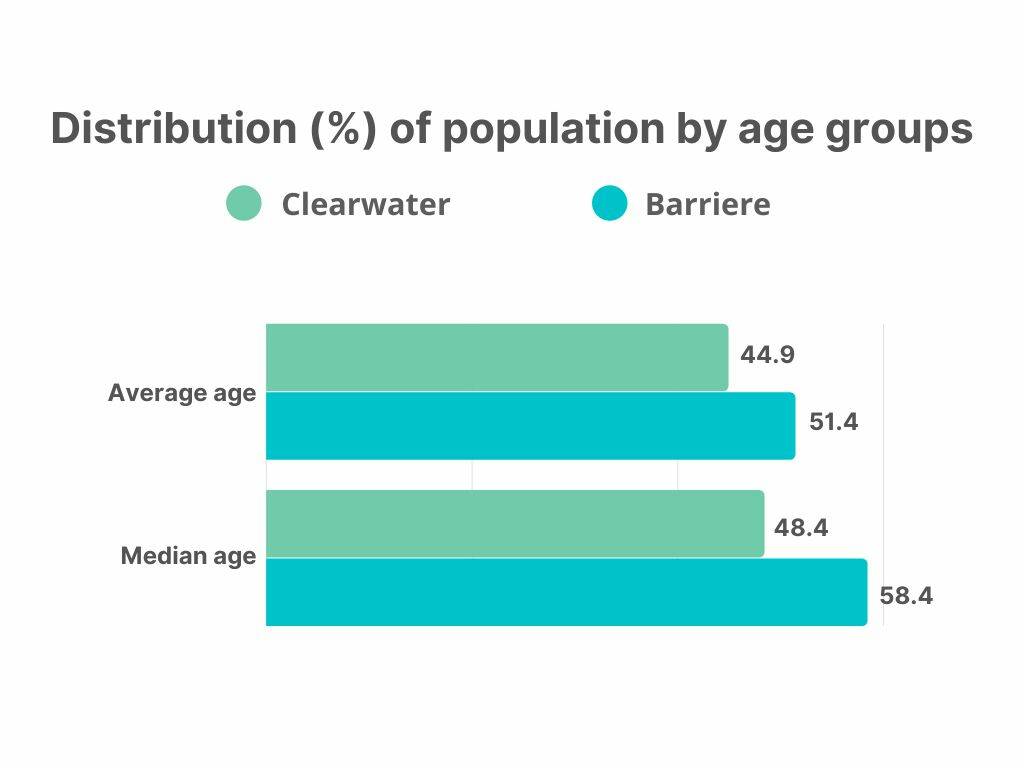Statistics Canada (Statscan) has released a new tranche of information from the 2021 census, and it shows that for the first time since the end of the baby boom, the boomers — who were born between 1946 and 1965 and were between the ages of 56 and 75 in 2021 — make up less than a quarter of the Canadian population. They represent 24.9 per cent of the Canadian population, compared with 41.7 per cent in 1966, when they were under the age of 20.
Millennials, who are those born between 1981 and 1996 and were between 25 and 40 years old in 2021, are the fastest-growing generation. Their numbers rose 8.6 per cent between 2016 and 2021, and Statscan says that the increase is due to immigration.
The number of people aged 65 and older in Canada is now 19 per cent of the total population, up from 16.9 per cent in 2016. The number of people aged 85 and older — 861,395 — has more than doubled since the 2001 census, and is expected to triple by 2046, to nearly 2.5 million people.
In British Columbia, 20.3 per cent of the population is 65 or older, up from 18.3 per cent in 2016. In comparison, 14.3 per cent of B.C.’s population is 14 or younger, down from 14.9 per cent in 2016. Province-wide, 2.4 per cent of residents are 85 or older.
The newly-released figures show that small communities in this region continue to show a much higher percentage of residents 65 or older when compared with the national and provincial figures.
ALSO READ: Census shows apartment growth, but supply remains the main issue in B.C.: experts
ALSO READ: 2021 census shows number of seniors over 85 expected to triple in next 25 years
In Clearwater, 24.9 per cent of residents are 65 or older, up from 20 per cent in 2016, with 40 people (1.7 per cent) aged 85 or older; 16.8 per cent of residents are 14 or younger.
In Barriere, 34.3 per cent of residents are 65 or older, up from 28.9 per cent in 2016, with 40 people (2.3 per cent) aged 85 or older; 11 per cent of residents are 14 or younger.
In Thompson-Nicola Regional District area A, 34.3 per cent of residents are 65 or older, up from 26.1 per cent in 2016, with 15 people (1 per cent) aged 85 or older; 13.1 per cent of residents are 14 or younger.
In area B, 21.7 per cent of residents are 65 or older, down from 23.4 per cent in 2016, with zero people aged 85 or older; 6.5 per cent of residents are 14 or younger.
In area O, 29.5 per cent of residents are 65 or older, up from 26.1 per cent in 2016, with 30 people (2 per cent) aged 85 or older; 13.1 per cent of residents are 14 or younger.
The median age of British Columbians is 42.8 years. In Clearwater it is 48.4 (47.5 in 2016); in Barriere it is 58.4 (54 in 2016); in Area A it is 55.2 (54.7 in 2016); in Area B it is 53.2 (53.8 in 2016); and in Area O it is 55.2 (55.2 in 2016).
2011 was the first year in which seniors (65 and older) outnumbered children (0 to 14 years) in B.C., but at the time the gap was just over 11,000. In 2016, seniors outnumbered children by just over 150,000 province-wide, and in 2021 they outnumbered children by 299,465.
Statscan notes that the fact that baby boomers are reaching more advanced ages is gradually putting more pressure on the health and home care systems, as well as on pension plans.
Seniors aged 85 and older are growing in number and as a proportion of the population. Despite being impacted by the COVID-19 pandemic, this population continues to increase faster than Canada as a whole. The growth of this population will accelerate even further in coming years, as the first baby boomer cohorts will turn 85 in 2031.
“These older Canadians have contributed greatly to society through their long working lives, by taking care of younger generations, transmitting their experience and knowledge, acting as role models for younger people, and being memory-keepers of the past and of family traditions,” says Statscan.
“They also have unique needs. Many face activity limitations and need health and home care services — the rapid growth of this population in coming years is likely to add to the existing pressures in the health care and home care sectors. An increasing number are no longer living in private dwellings and need different types of housing options, such as seniors’ residences at first, and nursing care facilities as they get older. Those who stay longer in private homes may have specific needs related to home care, transportation, and security.”
newsroom@clearwatertimes.com
Like us on Facebook and follow us on Twitter

